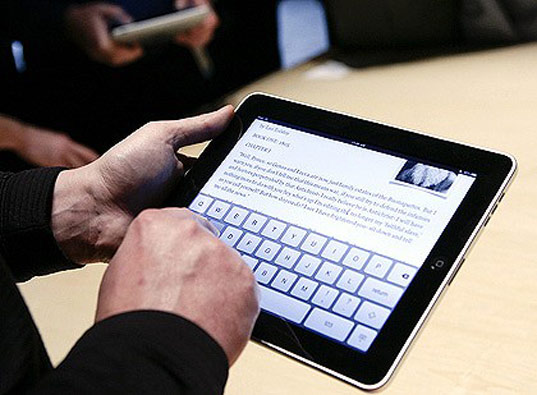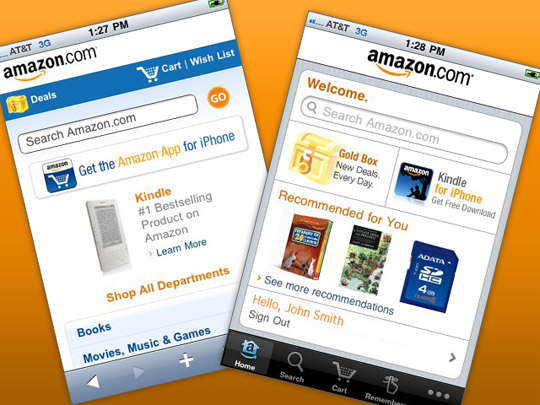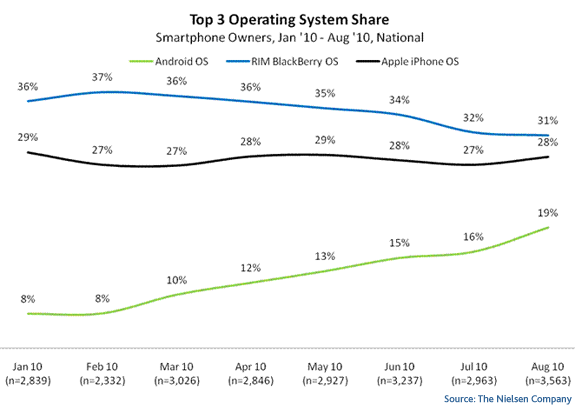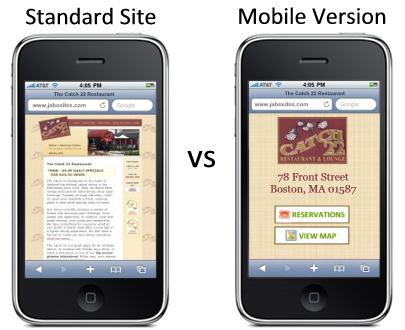Guest Correspondent Randolph Jones of the Oregon Shakespeare Festival attended Capacity Interactive's 2015 Digital Marketing and left elated and hopeful. The conference focused on the intersection of technology, marketing, and the arts and featured presenters from across the sector. To learn more about what these presenters had to say, and to see what insight Jones draws himself, read the full article here.
Upcoming Webinar - Engaging Audiences Through the Mobile Web
 Mobilizing the Arts - Engaging Audiences Through the Mobile WebThursday, March 31, 2011
2:00pm - 3:30pm Eastern
Register today for $25
Presenter: David Dombrosky
Mobilizing the Arts - Engaging Audiences Through the Mobile WebThursday, March 31, 2011
2:00pm - 3:30pm Eastern
Register today for $25
Presenter: David Dombrosky
With the rapid adoption of web-enabled cell phones, smartphones and tablet computers, how are arts organizations adapting to the rise of the mobile Internet? What options are available to arts professionals who want to engage their audiences through mobile devices? What are the cost implications for these new technologies?
In this 90-minute webinar, we will:
- Examine the need for engaging with arts audiences through mobile devices
- Explore options for connecting with audiences via the mobile web
- Discuss what factors may lead you to choose one mobile option over another
- Take a look at the various ways in which arts organizations are using these tools to connect with their audiences
David Dombrosky is the Executive Director of the Center for Arts Management and Technology (CAMT), an applied research center at Carnegie Mellon University investigating ways in which arts organizations can use online technology to more effectively meet their goals. He frequently presents technology and social media workshops and webinars for arts managers – recently for The Association of American Cultures, Performing Arts Exchange, Chorus America, Opera America, College Art Association, and Grantmakers in the Arts.
Where Can I Park for the Show? Now, There's an App for That
 As a denizen of downtown Pittsburgh, I am well aware of how difficult it can be to find a parking spot when I go to the theatre, a gallery crawl, or the symphony. You end up driving to various parking garages only to find a "Lot Full" sign at the entrance.
In a brilliant bit of service to the arts organizations in the cultural district, the Pittsburgh Cultural Trust has created ParkPGH - a multi-platform service providing real-time parking availability information for eight garages in downtown Pittsburgh.
As a denizen of downtown Pittsburgh, I am well aware of how difficult it can be to find a parking spot when I go to the theatre, a gallery crawl, or the symphony. You end up driving to various parking garages only to find a "Lot Full" sign at the entrance.
In a brilliant bit of service to the arts organizations in the cultural district, the Pittsburgh Cultural Trust has created ParkPGH - a multi-platform service providing real-time parking availability information for eight garages in downtown Pittsburgh.
Here are two key reasons why I find this to be a brilliant service:
Addressing a community challenge: By creating ParkPGH, the Pittsburgh Cultural Trust has provided a solution for an issue impacting not just audience members for its own venues, but also audience members for a multitude of arts and cultural organizations not affiliated with the Trust, as well as employees and visitors for other businesses in the downtown cultural district.
Multiple ways of accessing information: The Cultural Trust worked with developers at Deep Local to create a multi-platform service, so that audiences have multiple ways of learning about available parking options. In addition to the iPhone application, ParkPGH has a mobile website, a traditional website, and both text and voice option -- thereby offering the service to anyone with a phone or access to the Internet.
Did I mention that the parking availability information is updated every minute? A key layer of the service developed in collaboration with Traffic 21, a multi-disciplinary initiative of Carnegie Mellon University directed from within Heinz College, which provided research capabilities and back-end support for the ParkPGH project.
So, thanks to the Pittsburgh Cultural Trust for making it easier and more convenient for me to find a parking spot in the cultural district! Hopefully, this idea will catch on in other cities.
Going Mobile - Websites vs Apps
This post also appears as part of the Arts Marketing Blog Salon hosted by Americans for the Arts.
During last week's Arts Marketing Blog Salon, Mary Trudel advocated connecting with audiences via mobile technology. CTIA, the international association for the wireless telecommunications industry, recently revealed that mobile phone market penetration in the United States reached 93% for the nation’s total population in June 2010. With usage numbers like that, there is no doubt that arts organizations should be investing in mobile engagement.

- Amazon can afford to have both an app and a mobile site.
But which should you choose if your budget is more limited?

User base: While 93% of U.S. residents have mobile phones, the U.S. market penetration for smartphones is 31%. This means that 62% of the U.S. population uses mobile phones for which they cannot download mobile applications.
Connectivity: Whereas mobile websites require users to be connected to the internet, many mobile applications do not require an internet connection once they have been downloaded to your smartphone. This may be important for patrons who are trying to engage with your organization but are in an area where wireless service is not available.
Platforms: Mobile websites are accessible from all types of mobile devices. Mobile apps, however, are tied to specific types of devices. For example, a patron with an Android smartphone cannot use a mobile app designed for an iPhone. Now, you may be saying to yourself, “Yes, but iPhones are the most popular smartphones on the market, so we should just design apps for iPhones.” If so, then you will be surprised to learn that Blackberry has 31% of the U.S. smartphone market share compared to the iPhone’s 28% and Android’s 19% according to The Nielsen Company.

Expectations: What do your patrons want from their mobile experience? Have you asked them? If your patrons simply want information (hours, directions, descriptions of work, etc.), then a mobile website is entirely sufficient. If you are looking to provide your patrons with an interactive, one-of-a-kind mobile experience, then you’ll need an app for that.
In a recent New York Times article, Edward Rothstein took a look at a number of mobile apps developed by museums and concluded:
I have used museum apps to help me navigate museums. But I have generally felt used along the way, forced into rigid paths, looking at minimalist text bites, glimpsing possibilities while being thwarted by realities… It is best to consider all these apps flawed works in progress.
In a response to Rothstein’s article, Brooklyn Museum’s Chief Technology Officer Shelley Bernstein shared:
I had mixed feelings about the article – I mostly agree that these apps all leave much to be desired, but I disagree that we shouldn’t be trying. Experimentation without perfection is a good thing…Each and every visitor walking in our doors is likely to expect something different from an app, and every visitor is going to respond differently to what we provide. My point is that it is our responsibility, collectively, to try new approaches and provide as many entry points into content and the museum as possible.
So, mobile website or mobile app? Personally, I believe that a mobile website should be phase one in any arts organization’s mobile engagement plan. Okay, I hear you asking, “Why? Won’t the phone’s browser just show my desktop website?” The best way to answer that question is to try it.
Go ahead. Take out your phone. Go to the menu, and select the internet option. At the prompt, enter your organization’s web address. Try it on several different devices. You will quickly notice that your standard website looks unusable on every phone. The one exception to this may be an iPhone, but even it will require the user to point, pinch and slide their way to your information.

- Even if you have an iPhone, standard websites are not as easy to navigate as mobile sites.

Still not convinced that your arts organization needs a mobile website? Morgan Stanley’s global technology research team recently released a report projecting that mobile internet usage will surpass desktop internet usage in 2014. If you do not have a mobile website, then the steadily increasing number of internet users who attempt to access your information via mobile devices will get the wrong content, presented in the wrong order, with a slow and costly download, and with an ill-adapted layout.
Don’t let this happen to your patrons. Even if you do not have room in your budget for a custom-designed mobile site, there are a number of resources available for converting your current website into a mobile-friendly site.







